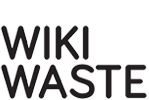Pollution Prevention and Control (Scotland) Regulations 2012: Difference between revisions
Created page with "Category: Legislation & Policy These Pollution Prevention and Control (PPC) Regulations 2012 implement the requirements of the Industrial Emissions Directive (IED) as well..." |
No edit summary |
||
| (2 intermediate revisions by 2 users not shown) | |||
| Line 1: | Line 1: | ||
[[Category: Legislation & Policy]] | [[Category: Legislation & Policy]] | ||
These Pollution Prevention and Control (PPC) Regulations 2012 implement the requirements of the Industrial Emissions Directive (IED) as well as consolidating the requirements from the earlier PPC regulations published in 2000. | These Pollution Prevention and Control (PPC) Regulations 2012 implement the requirements of the [[Industrial Emissions Directive]] ([[IED]]) as well as consolidating the requirements from the earlier PPC regulations published in 2000. | ||
The revisions aim to remove ambiguities and inconsistencies, ensure clearer environmental benefits, promote cost-effectiveness and encourage technological innovation. | The revisions aim to remove ambiguities and inconsistencies, ensure clearer environmental benefits, promote cost-effectiveness and encourage technological innovation. | ||
| Line 6: | Line 6: | ||
The fundamental philosophy behind the regulations is that environmental issues should be addressed in an integrated way in order to achieve the highest level of environmental protection from the largest industrial activities. | The fundamental philosophy behind the regulations is that environmental issues should be addressed in an integrated way in order to achieve the highest level of environmental protection from the largest industrial activities. | ||
Operators of installations that fall under the PPC regulations must have a permit in order to operate. Consideration is given to the use of Best Available | Operators of installations that fall under the PPC regulations must have a permit in order to operate. Consideration is given to the use of [[Best Available Technique]]s ([[BAT]]) to prevent and minimize emissions, this also aims to balance the costs to the operator against the benefits to the environment as much as possible. | ||
Permits are considered based on the nature of the activity and whether it is defined as a Part A activity or a Part B activity. | Permits are considered based on the nature of the activity and whether it is defined as a Part A activity or a Part B activity. | ||
Operators of installations where the highest risk industrial activities are undertaken are required to have a permit under Part A of the regulations. The regulation of PPC Part B activities focuses on control of emissions to air <ref>SEPA (2019). [https://www.sepa.org.uk/regulations/pollution-prevention-and-control/ Pollution prevention and control | Scottish | Operators of installations where the highest risk industrial activities are undertaken are required to have a permit under Part A of the regulations. The regulation of PPC Part B activities focuses on control of emissions to air <ref>SEPA (2019). [https://www.sepa.org.uk/regulations/pollution-prevention-and-control/ Pollution prevention and control | [[Scottish Environmental Protection Agency]] (SEPA). Sepa.org.uk.] [online] [Accessed 21 Nov. 2019].</ref> <ref> [http://www.legislation.gov.uk/ssi/2012/360/contents/made The Pollution Prevention and Control (Scotland) Regulations 2012. (2012). Scottish Statutory Instruments. legislation.gov.uk.]</ref>. | ||
==References== | |||
<references /> | |||
Latest revision as of 14:08, 22 March 2021
These Pollution Prevention and Control (PPC) Regulations 2012 implement the requirements of the Industrial Emissions Directive (IED) as well as consolidating the requirements from the earlier PPC regulations published in 2000.
The revisions aim to remove ambiguities and inconsistencies, ensure clearer environmental benefits, promote cost-effectiveness and encourage technological innovation.
The fundamental philosophy behind the regulations is that environmental issues should be addressed in an integrated way in order to achieve the highest level of environmental protection from the largest industrial activities.
Operators of installations that fall under the PPC regulations must have a permit in order to operate. Consideration is given to the use of Best Available Techniques (BAT) to prevent and minimize emissions, this also aims to balance the costs to the operator against the benefits to the environment as much as possible.
Permits are considered based on the nature of the activity and whether it is defined as a Part A activity or a Part B activity.
Operators of installations where the highest risk industrial activities are undertaken are required to have a permit under Part A of the regulations. The regulation of PPC Part B activities focuses on control of emissions to air [1] [2].
References
- ↑ SEPA (2019). Pollution prevention and control | Scottish Environmental Protection Agency (SEPA). Sepa.org.uk. [online] [Accessed 21 Nov. 2019].
- ↑ The Pollution Prevention and Control (Scotland) Regulations 2012. (2012). Scottish Statutory Instruments. legislation.gov.uk.
